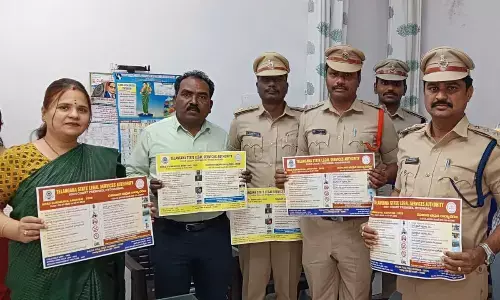Padding the padded

The curious case of cheap sanitary pads!
On the eve of Menstrual Hygiene Day, when world over, everywhere there is euphoria that, India is leading 'The Pad Revolution', and the whole space is abuzz with an excitement.
Here's an introspection of how certain areas are still lagging behind, which may dampen the spirit of activists and people working in this field.
Its yet another day for women. So carefully, logically and sensitively put together as May 28th.
A healthy woman's menstrual cycle consists of 28 days and the period of menstruation is for 5 days. World over, it is celebrated as "Menstrual Hygiene Day".
This day leaves one in a sense of awe and sometimes despair too. Awe, because India is successful in breaking the silence with its programs consisting innovative modes.
It surely looks like the taboo has reduced a lot, though still prevalent in some areas.
Now the million-dollar question is whether the broken silence is filled with proper, sustainable knowledge or just with noise of and no concrete action...which is something we must examine.
For some years, there's steady but quite euphoric revolution in padding the whole country...every menstruating woman in India and the developing countries.
The emotional connect and the prospect of providing liberation to a girl in pain at a cost of Rs 2 to Rs 3 per pad made literally, every donor agency jump with excitement.
The numbers counted everywhere; the number of adolescent girls reached; the number of communities covered. Everything and every womanhave become a statistic, fortunately or unfortunately.
As a development activist, I too have joined the bandwagon and did my bit of breaking the taboo, conducting awareness programs and sensitisation of communities. However, none of us have considered the following points…
♦ In a frenzy competition of providing lowest cost sanitary napkins, is there a mechanism to verify the quality of materials used and sanity and sanctity of processes in making these napkins?
♦ Was any study and research conducted to assess long term health aspects of using these napkins.
There is definite evidence that even high cost, high absorbent napkins cause skin rashes to soreness and dryness; has anyone verified the quality of low-cost sanitary napkins?
♦ In rural and tribal areas of Andhra Pradesh, Initially the government supplied pads and now in most places distribution stopped and our girls are buying them at a cost of 35 rupees per packet of six-eight pads and using them.
But, has there been any Information dissemination and awareness on disposal of these pads after use? In most cases none.
♦ It is dreading to consider that in the coming days, rural and tribal communities would be littered not only with plastic chips packets, but also plastic from sanitary napkins.
India being a developing country, with a population of 1.34 billion, out of which 323.6 million women are between the age group of 15-49 - If we consider that 10 per cent of Indian women use disposable sanitary pad, then each woman will generate at least half a kilo of waste per month.
That means 10 per cent of the female population in India will generate 16180 tons of waste every month.
♦ The pad is part of menstrual hygiene, which speaks about a lot of things, like owning up the communities, to bring back the harmony and understanding about unhealthy and unsafe practices.
Like for example incinerating wood pulp or plastic sheets used as filler material has long term toxic effects and increases the carbon footprint.
♦ By calling the cloth, re-usable napkins as useless and disease prone, are we also exposing our women to untested and coarse, cheap napkins, which may cause severe health hazards in long-run after prolonged use.
Are we taking majority of communities away from natural things like banana fibre or flax spinning waste, which will provide really cheap and eco-friendlynapkins.
The discussion is not about being skeptical of development initiatives, but I strongly feel that in the name of cheap initiatives and to look good in global market, we ignore our environment and our women's long-term health.
it is also important that we break the uncomfortable silence that surrounds the economic and ecological sustainability of so-called cheap pads.
Cheap always needn't compromise quality; compromising on health is never cheap to any community or government.
AndI do feel its very important to create awareness and initiate action towards sensitisation, but in the right direction.
Sai Padma















